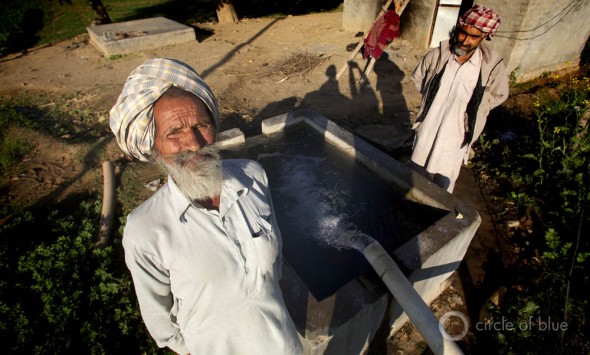JGanter-Punjab_G3_1474
Just outside the village of Parchh in India’s northern Punjab state, Nagh Singh stands in front of the irrigation well that he has owned for close to 30 years. About 15 families who together sharecrop three hectares of land rely on this water, which runs for 18 to 20 hours per day every 20 days or so, when the electricity is coming through the lines. Standing behind, Nithra Singh also owns an irrigation well that supports an additional 15 families on the neighboring three hectares. Both wells operate with electric pumps to draw water that is warm to the touch from deep below the ground. And, as is the case with the millions of other rice and wheat farms throughout India, the state government provides the water and the electricity for free. Though these subsidies have pushed India from the perennial fear of famine to record harvests, Punjab’s 1.2 million wells are draining aquifers and lowering water tables, as the Sekhon family is well aware. Four years ago, they spent more than $US 11,000 to replace their two existing 50-meter wells with 100-meter wells, driven by more powerful pumps. If there is a single prominent symbol for India’s resource-draining, energy-wasting, treasury-tilting farm policies, it is the electric water pump. Each pump sucks up an average of 16,500 kilowatt-hours of electricity annually. Altogether, the nation’s 20 million pumps consume on the order of 330 billion kilowatt-hours of electricity each year, or 34 percent of the 959 billion kilowatt-hours of electricity that India generated in 2011.



Leave a Reply
Want to join the discussion?Feel free to contribute!